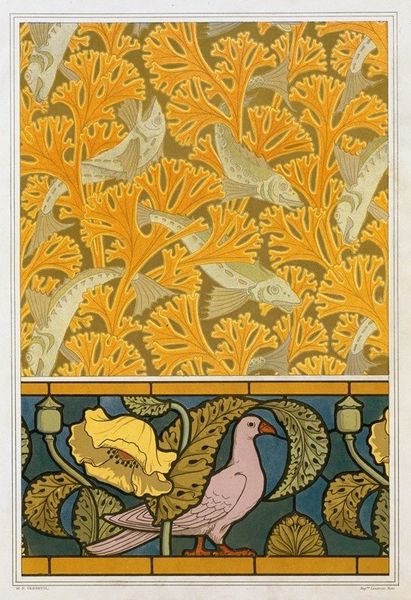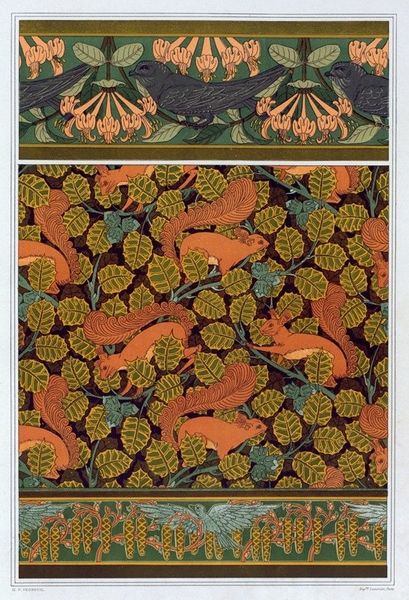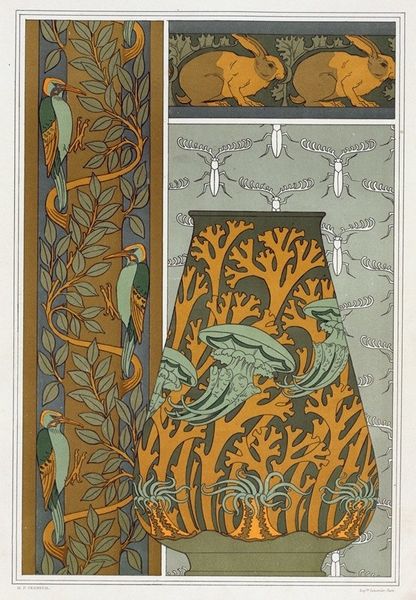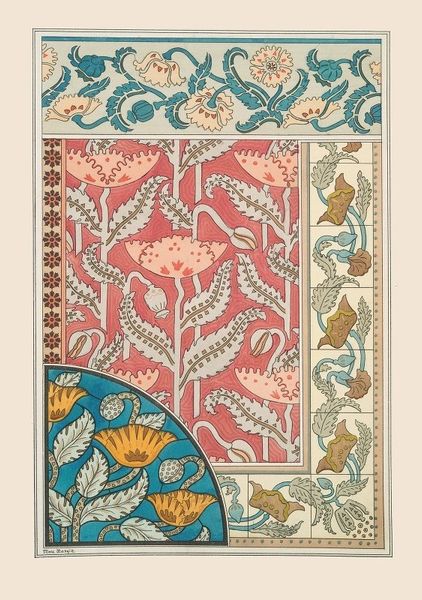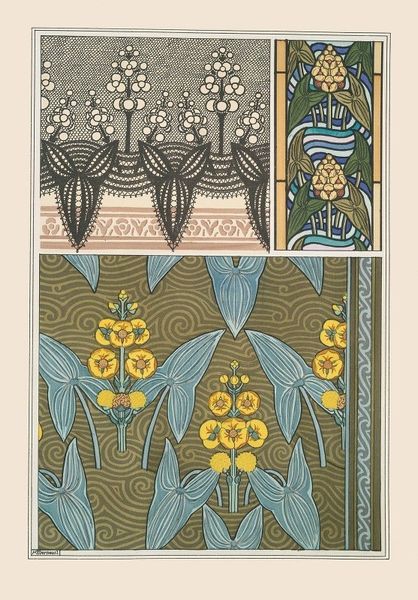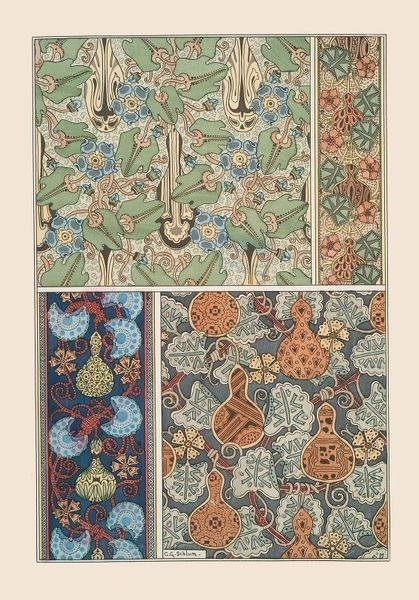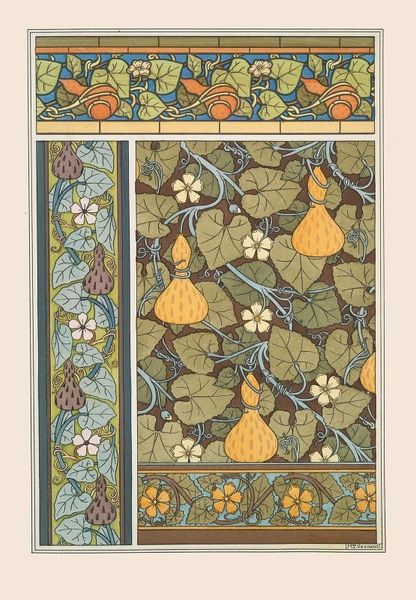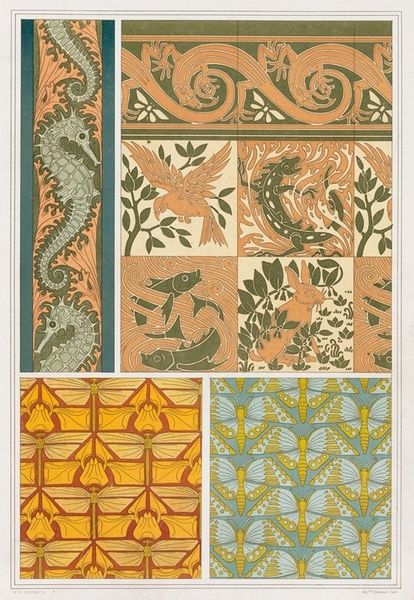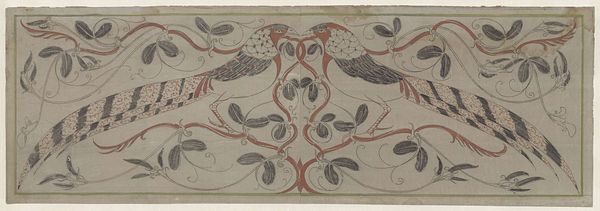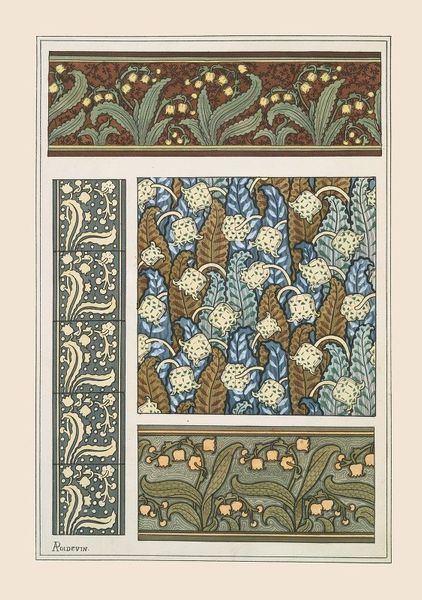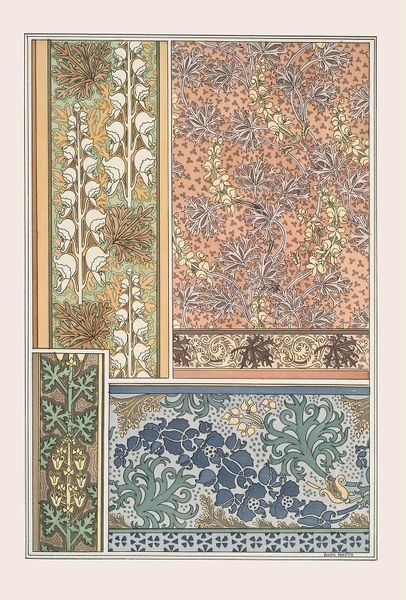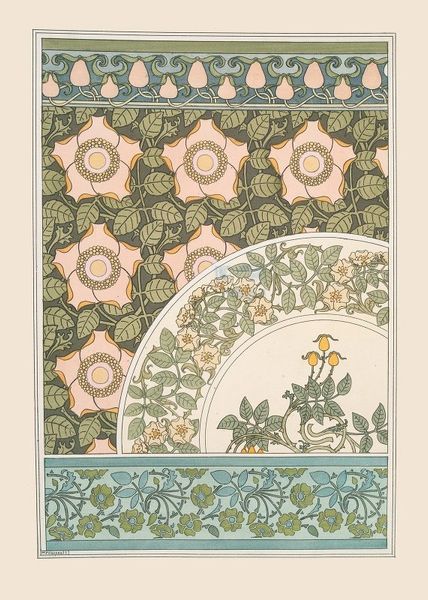
Cygnes et sagittaire, bordure. Pappillons et feuillages, étoffe. Cerfs et biches, frise. 1897
0:00
0:00
drawing
#
drawing
#
natural stone pattern
#
naturalistic pattern
#
organic
#
art-nouveau
#
pattern
#
landscape
#
geometric pattern
#
pattern background
#
ethnic pattern
#
organic pattern
#
repetition of pattern
#
vertical pattern
#
pattern repetition
#
decorative-art
#
layered pattern
Copyright: Public Domain: Artvee
Curator: This is “Cygnes et sagittaire, bordure. Pappillons et feuillages, etoffe. Cerfs et biches, frise,” a drawing by Maurice Pillard Verneuil created around 1897. Editor: It's immediately calming. A serene geometry punctuated by life—swans, butterflies, deer… it feels like a gilded cage but in the best, most aesthetically pleasing way. Curator: Note the distinct zones within the composition. At the top, we observe the stylized swans, their forms interwoven with linear representations of water and foliage. Mid-ground shows another set of interwoven elements composed of butterflies, perhaps, and foliage, while the bottom contains the deer amongst trees. Each register employs subtle variations in color and texture. Editor: Right, there's an intentional flatness to it, wouldn’t you say? It’s not trying to mimic reality; instead, it uses these natural forms as building blocks for a decorative scheme. Reminds me of wallpaper… very fancy, slightly decadent wallpaper. But those deers, are they stained peach? A nice contrast, really. Curator: Indeed, Verneuil was a key figure in the Art Nouveau movement, known for its emphasis on decorative arts and organic motifs. One might read these patterns as manifestations of a late 19th-century preoccupation with surface design and the integration of art into everyday life. Editor: Okay, "integration of art into everyday life"—I hear that. But for me, it also feels like a controlled explosion of nature. All that contained energy, threatening to spill over the neat lines that box them in. Like a bottled-up fairytale, about to pop! The repetition of forms is a bit hypnotizing, as if it wants to engulf me inside an aesthetic prison. Curator: Such formal repetitions establish rhythm, symmetry, and therefore a highly ordered composition. By drawing our eyes and making us focus, this effect might highlight and reinforce themes like the relationship between the natural world and the artifice of design. Editor: I agree! And after our analysis, my first instinct about it being 'calming' shifted a bit into the unsettling! Which shows the brilliance, in how such harmony holds all these opposing messages together... Curator: A stimulating example, which I feel encapsulates the era's aesthetic values.
Comments
No comments
Be the first to comment and join the conversation on the ultimate creative platform.
